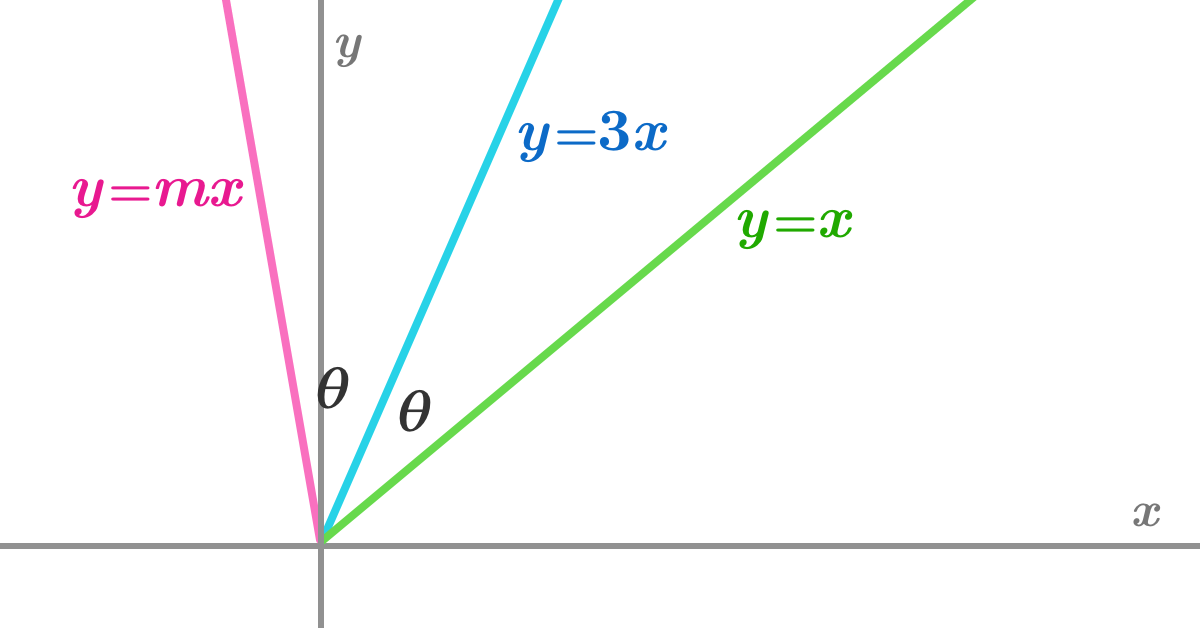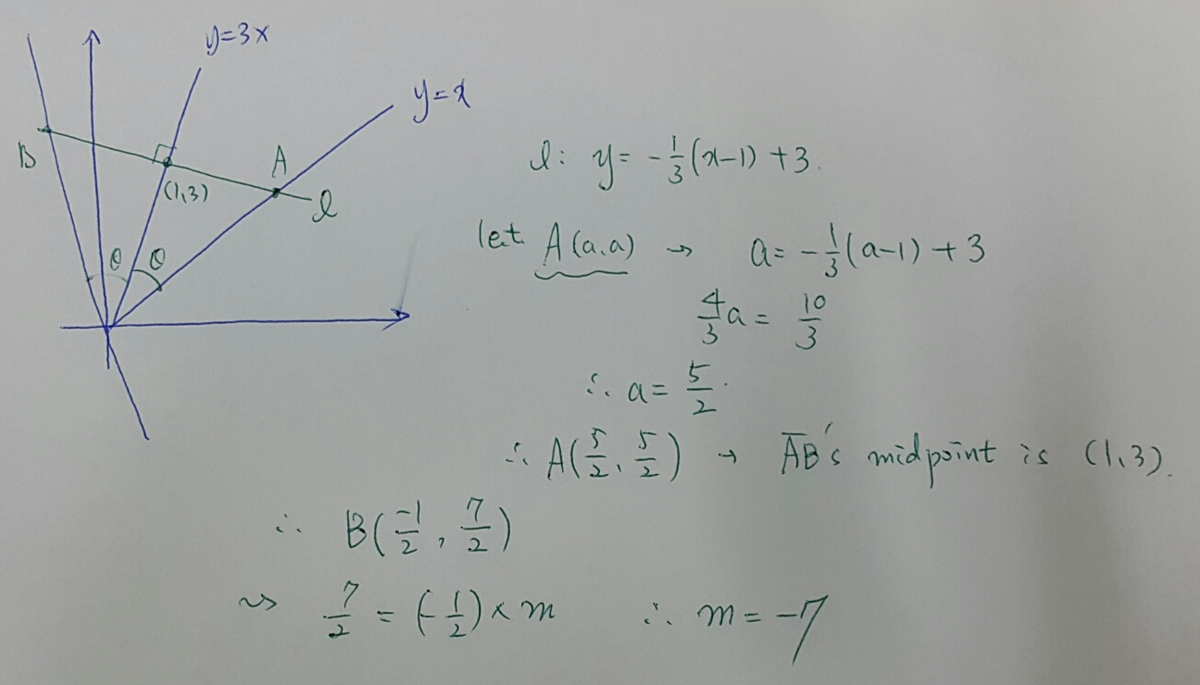This section requires Javascript.
You are seeing this because something didn't load right. We suggest you, (a) try
refreshing the page, (b) enabling javascript if it is disabled on your browser and,
finally, (c)
loading the
non-javascript version of this page
. We're sorry about the hassle.


Relevant wiki: Sum and Difference Trigonometric Formulas - Problem Solving
More details :
Let θ denote the acute angle between the straight lines y = x and y = 3 x . Since y = 3 x is an angle bisector of the straight lines y = m x and y = x , then the acute angle between the lines y = m x and y = 3 x is also θ , as shown in the picture above.
Since the tangent function represents the ratio of the rise and the run of the slope a straight line, then y = x = 1 x has a gradient of 1 = tan 4 π . In other words, the angle formed between the x -axis and the line y = x is 4 π (or 4 5 ∘ ).
Likewise, the angle between the x -axis and the line y = 3 x (of slope 3) is θ + 4 π . So, tan ( θ + 4 π ) = 3 . By applying the compound angle formula for the tangent function , the previous equation can be rewritten as 1 − tan θ tan 4 π tan θ + tan 4 π = 3 . Knowing that tan 4 π = 1 , we can simplify the equation to obtain tan θ = 2 1 .
And now we want to find the value of m , where m = tan ( 2 θ + 4 π ) . By double angle formula, tan 2 θ = 1 − tan 2 θ 2 tan θ = 3 4 . Hence, m = − 7 .